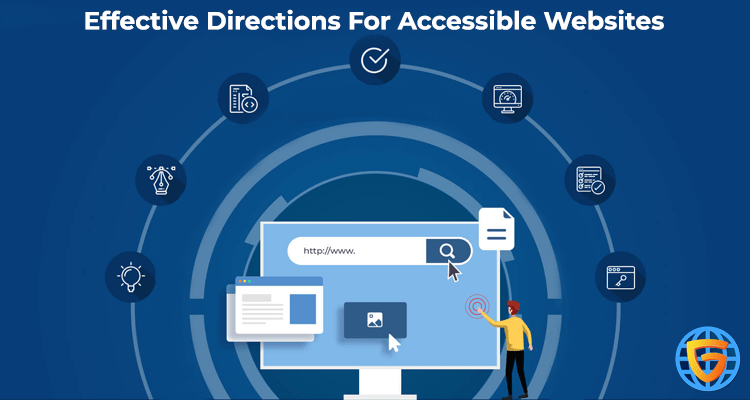We all are aware of the fact that creating accessible designs is essential for a well-established website. However, most of us barely take it into account while crafting a website. Let's discuss some effective directions to make a website accessible to everyone.

1. Validate Your XHTML and CSS
Validating your code can often lead you to discover issues that you may not have noticed before. Things like impregnated labels and grooved labels look great in your browser but can cause sight problems for others. The two main tools that you should use are an XHTML validator and a CSS validator.
2. Include Alt Text For Images
Not everyone has images enabled in their browser, and many people use text-to-speech programs because they suffer from vision problems. Provide an Alt text for images via the ALT attribute to ensure that images have a description and can be interpreted by visitors. Moreover, it helps your site when indexed by search engines.
3. Make Sure Your Site Works Without JavaScript
As with images, many people browse with JavaScript turned off, this is a fairly large number and it's worth making sure your website works properly without JavaScript. Based too heavily on it can estrange some people in your audience.
4. Detach Content And Formatting Using CSS
As a website that showcases and promotes Cascading Style Sheets usages, it's no wonder to let them be mentioned here. Using CSS keeps your pages unformatted and ensures that browsers can add their own rules to make pages more contrasting and easier to view.
5. Provide a High Contrast Style-Sheet
Why not create a second stylesheet for your website, which diminishes or clears the color and increases the contrast. Place the link to activate this style near the top of the page so that hard-of-sight users can see the benefit of the content of your website.
6. Make Sure the Link Text Is Descriptive
Make your links more descriptive, rather than simply writing- click here, or read more. We all get trapped into this sometimes; however, a relevant link can be easily understood, thereby improving accessibility.
7. Add Links on Pages to Jump to Content
Instead of letting people scroll through the repetitive header on every page of your website, include a link that allows them to jump to the main content further down the page. This saves time, especially on text-to-speech browsers, which read all of the information on the page.
8. Make Sure Each Module Has Tag Labels
Correctly labeling the entries on the forms will make it much easier to interpret and complete them in access browsers.
9. Do Not Open Links in a New Window
While it's nice to link to other websites in a new window, it's really bad practice. Everyone knows how to use a ‘back’ button, however, when the necessity to close windows arises along with following them at the same time, many internet users can be confused and annoyed.
10. Make an Accessibility Statement
An accessibility statement on one page of a website will illustrate to people which features you offer, thereby explaining how they can navigate around your site easily. Explain how to turn on your high contrast stylesheet and where ‘jump to content’ links are. People will be grateful if you say it clearly.
Do you want to take a web designing course to have a great career in web designing? Enroll in a Web designing course in Noida at GICSEH, the best web designing institute in Noida.
Join GICSEH today!!